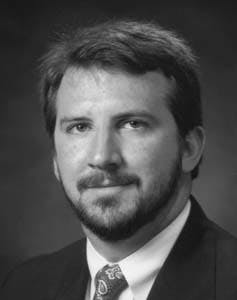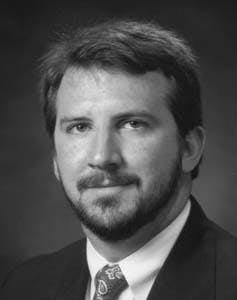Charles Willis
River Gas Corp.
Northport, Ala.
An efficient system of drilling core holes for data followed by drilling, tracing, and producing gas wells helped develop economic quantities of coalbed methane.
The objective of the Drunkards Wash, Utah, project is to explore for and produce commercial quantities of methane from medium-depth coal seams in east central Utah. Current gas production rates are exceeding the projections made prior to development and used for initial economic feasibility.
At the end of 1994, median production was 288 Mcfd per well. Gas rates are increasing as reservoir depressurization continues.
River Gas Corp., a private company specializing in coalbed methane development and production, broke ground at the Drunkards Wash project site in east central Utah's Uinta basin in early 1991. The project participants are Texaco Exploration & Production Inc., Dominion Reserves-Utah Inc., and project manager River Gas Corp.
Acreage development is progressing in an orderly manner as new core holes are drilled each year. The project has purchased its own wire line coring equipment for use by the drilling contractors. If the core results are satisfactory, the borehole can be converted to a productive well.
The Drunkards Wash project consists of approximately 125,000 acres situated 3-5 miles west of Price, Utah.
Although all the drilling to date has been done on state of Utah leases, the majority of the property leased is federal acreage, which requires an environmental impact statement. The Drunkards Wash project is absorbing the cost of the environmental impact study to speed its preparation in accordance with the operators' memorandum of understanding with the Bureau of Land Management. River Gas expects completion of the environmental impact statement by December 1995. The main areas of public interest for the environmental impact statement are the impact on wildlife, socioeconomics, and water resources.
CORING PROGRAM
The first core hole (RGU No. 1) was drilled in February 1991 with a conventional coal mining core rig. The rig cut 1,931 ft of core, with a total of 37 ft of coal cored. All coal samples underwent direct method gas desorption tests. Fig. 1 (58628 bytes) is a generalized stratigraphic column of the major coal seams developed by the Drunkards Wash project.
A one-well pilot project was initiated adjacent to RGU No. 1 in June 1991. This pilot was expanded to three wells in July 1992, and ten wells were drilled to expand the area of development in late 1992.
In May 1993, two core holes were drilled using a wire line retrievable coring system purchased for the Drunkards Wash project. Beginning in July 1993, 18 additional wells were drilled based on information from these two wells. Two more core holes were drilled in late 1993. Beginning in June 1994, 39 wells were drilled and by December 1994, four more core holes were drilled. Fig. 2 (26549 bytes) shows the pace of development of the Drunkards Wash project.
To date, a total of 2,982 ft of core have been cut with 185 ft of total coal recovered.
Gas content and thickness data were compiled, and volumetric calculations were performed to determine recoverable gas per 160 acres for the project. These data were mapped and contoured to delineate the areas of interest. Contouring has been validated on other projects by estimating gas contents for core holes prior to drilling. Predicted and actual gas contents for these holes were within 5%.
The nature of the coal resource allows accurate subsurface mapping of both the coal thickness and the associated gas contents. These maps allow development plans to be made far in advance of construction with only minor alterations necessary as more data are received from the drilling operations.
DRILLING OPERATIONS
To date, River Gas Corp. has drilled 78 wells and one exploratory core hole in developing the Drunkards Wash project. A total of 163,562 ft of hole has been drilled, and 160,578 ft of 5 1/2-in. casing have been run.
Locations and roads are built prior to drilling operations. Considerable expense is borne by the project to design and build roads that can provide location access by heavy equipment in all but the worst weather. This approach to road building has allowed the operator to maintain and workover wells year round, even during the winter, without incurring large dozer and grader expenses for road repair.
The majority of the wells are drilled with 7 7/8-in. bits and 6-in. air hammers. A few wells had to be finished using mud pumps because of water encountered during drilling through fractured zones. The average total drilling time per well was 36 hr (excluding surface pipe waiting-on-cement time) with penetration rates often reaching 130 ft/hr.
The hole conditions are fairly stable. After the wells reach total depth, the drilling rigs are moved off location, and the holes are logged. Workover rigs run the 5 1/2-in. casing and rotate and reciprocate pipe during cementing operations. The casing is cemented with light-weight Class A cement to limit hydrostatic head on the coal formations.
COMPLETION PRACTICES
Except in one special case, all formations open to production have been hydraulically stimulated. Fracturing the coal is necessary to achieve economic production rates and efficient formation drainage.
The scale of the project and the amount of work available are important factors in pricing fracturing services. Large blocks of work are awarded to a few contractors, which are then able to economize operations and pass the savings back to the operator.
Table 1 (16473 bytes) summarizes average frac jobs for each coal bench developed.
The fracture treatments pump 12/20 Colorado silica and 20/40 Ottawa sand. By coordinating all efforts involved in the tracing procedure, the operator is able to frac as many as three zones in 1 day using one crew. Water for frac jobs is purchased from the local municipality. Frac water is pumped through temporary pipelines to areas near locations where trucks can be loaded. Sometimes water can be pumped directly into frac tanks at the job site. The water is filtered prior to being gelled.
After the formations are fractured, contractor service rigs drill out the bridge plugs and clean up the wells. Tubing and rods are run in preparation for setting a pumping unit.
One well was stimulated using the cavity completion technique. Results were less than expected, and this technique has not been used since. More research will be necessary prior to attempting it again.
PRODUCTION OPERATIONS
Gas and water gathering pipelines are laid to every well. The rights-of-way for all roads are negotiated to be wide enough to allow pipeline installation to follow the road system. All gathering lines are polyethylene plastic and tested to 160 psi. Gas gathering lines lead to field trunk lines which terminate at the main compressor site.
Compressors increase the gas pressure from 10 psi to about 500 psi, and the gas is transferred to a buyer's transmission line. The water pipeline system takes the produced water to a disposal well on the property.
Fig. 3 (64264 bytes) is a typical completed well schematic, showing a cased-hole completion with a pumping unit. Most pumping units are Lufkin 228-173-100 conventional type powered by electric motors. The separators are tested to 250 psi and are designed to handle 1,500 bw/d. The wellhead meter runs are flange-type orifice meters tied into a field automation system. Most gas is produced up the annulus between the tubing and casing, with water and entrained gas conveyed through the tubing.
Currently, 12 wells do not require pumping and are completed to flow gas and water up the tubing. Several high-water-volume wells are produced with progressive cavity pumps.
At present, River Gas Corp. has five electric compressors, totaling 6,250 hp, in operation to move gas from the wellhead to the sales point. By the end of the second quarter of 1995, two more compressors are expected to be in place to handle increasing production rates.
The most common remedial action taken to maintain production rates from the wells is a pump change. Sand production and fines production are a problem early in the life of the well, but this difficulty lessens as the wells age.
Environmental concerns are of prime importance to coalbed methane operators. Erosion control is achieved by seeding all rights-of-way and the sides of locations.
Table 2 (10929 bytes) lists the. average cost breakdown for a well, excluding coring costs, in the Drunkards Wash project.
THE AUTHOR
Prior to his current duties involving exploration and acquisition, he was manager of reservoir engineering. Willis has a BS in petroleum engineering from Colorado School of Mines. He is an active member of the Society of Petroleum Engineers and is a registered professional engineer in Alabama and Utah.
Copyright 1995 Oil & Gas Journal. All Rights Reserved.



